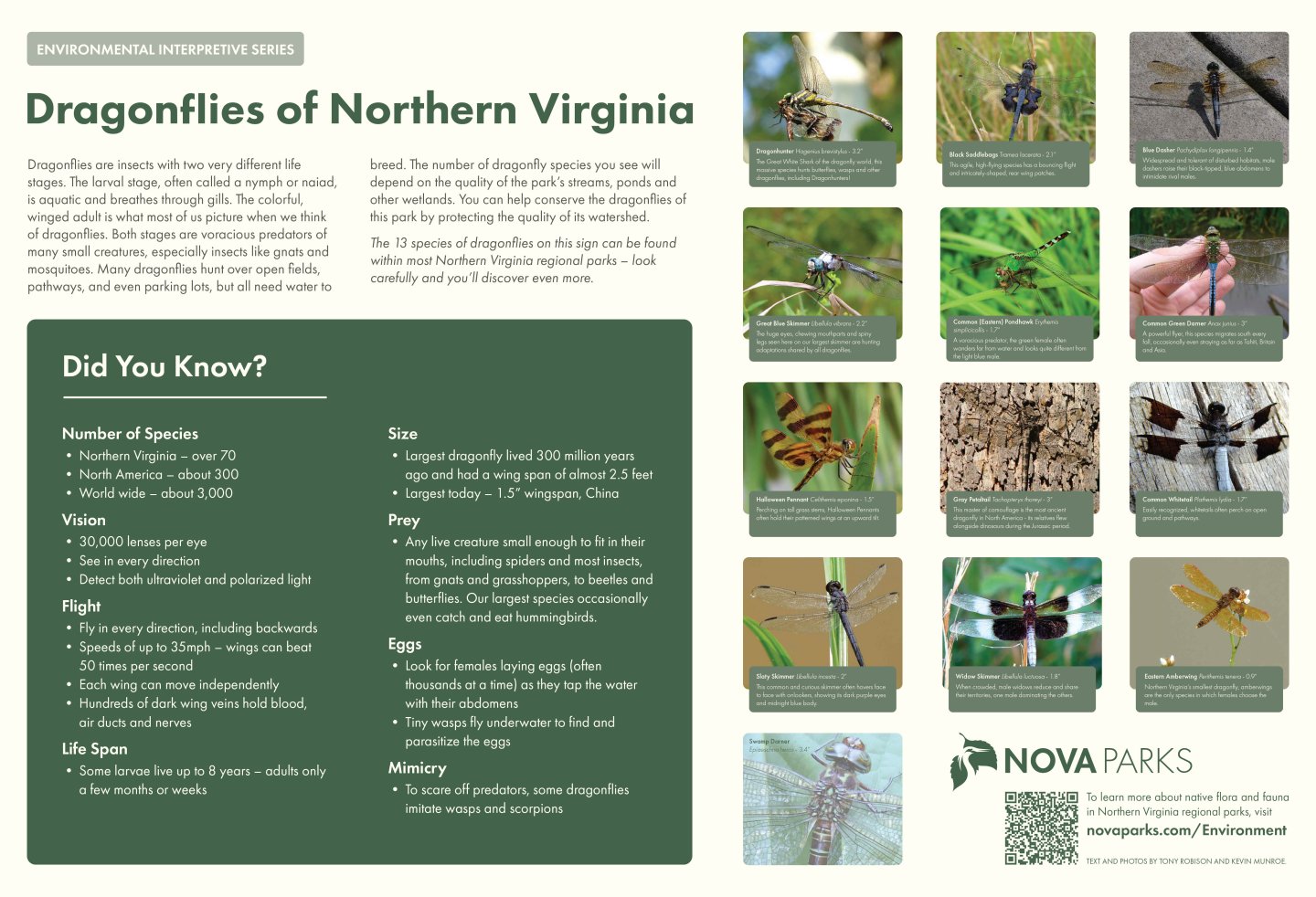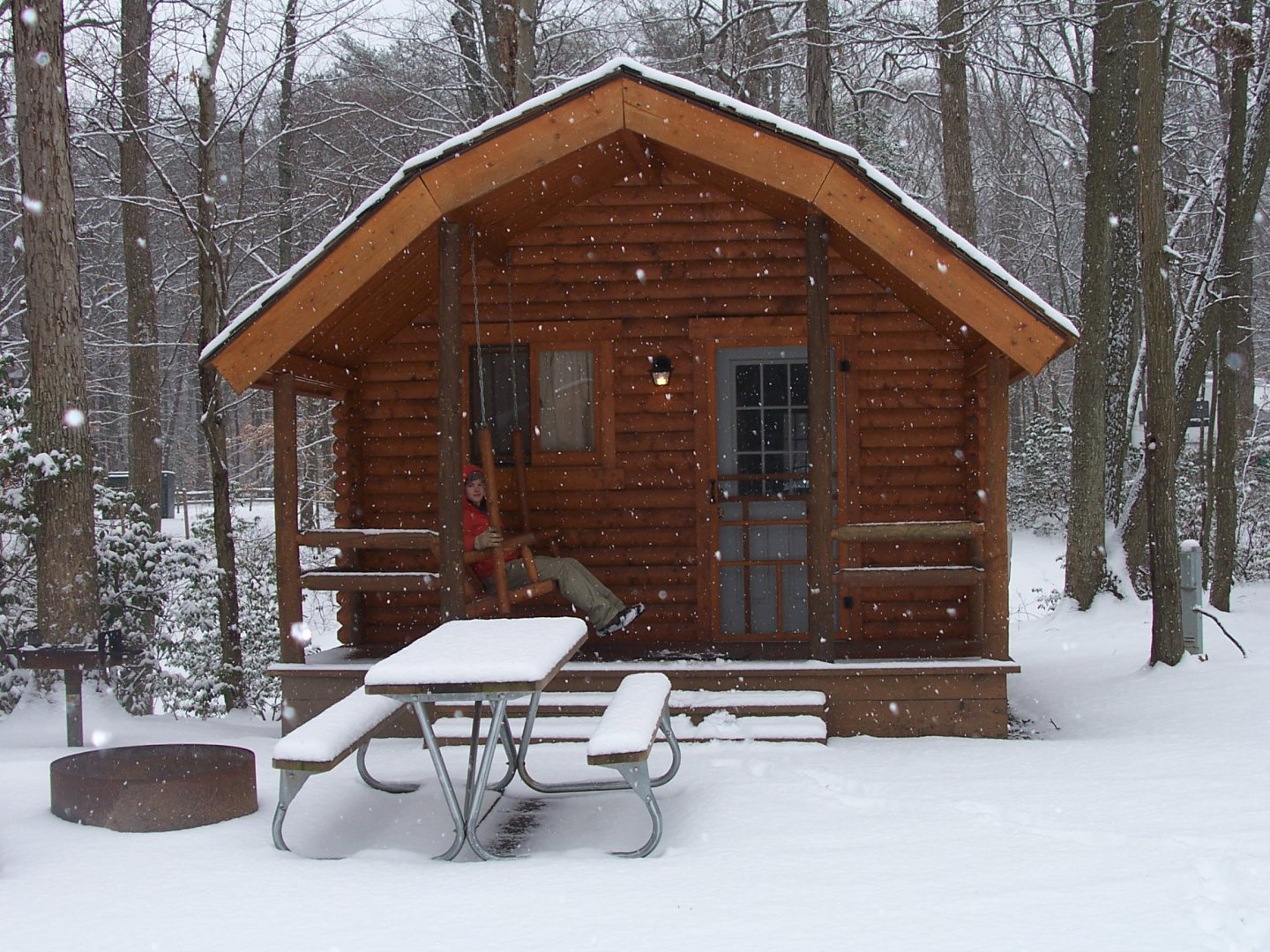Algonkian Regional Park
Environmental Interpretive Series: Dragonflies of Northern Virginia

Dragonflies are insects with two very different life stages. The larval stage, often called a nymph or naiad, is aquatic and breathes through gills. The colorful, winged adult is what most of us picture when we think of dragonflies. Both stages are voracious predators of many small creatures, especially insects like gnats and mosquitoes. Many dragonflies hunt over open fields, pathways, and even parking lots, but all need water to breed. The number of dragonfly species you see will depend on the quality of the park’s streams, ponds and other wetlands. You can help conserve the dragonflies of this park by protecting the quality of its watershed.
The 13 species of dragonflies on this sign can be found within most Northern Virginia regional parks – look carefully and you’ll discover even more.
Did You Know?
Number of Species
- Northern Virginia – over 70
- North America – about 300
- Worldwide – about 3,000
Vision
- 30,000 lenses per eye
- See in every direction
- Detect both ultraviolet and polarized light
Flight
- Fly in every direction, including backward
- Speeds of up to 35mph – wings can beat 50 times per second
- Each wing can move independently
- Hundreds of dark-wing veins hold blood, air ducts and nerves
Life Span
- Some larvae live up to 8 years – adults only a few months or weeks
Size
- Largest dragonfly lived 300 million years ago and had a wing span of almost 2.5 feet
- Largest today – 1.5” wingspan, China
Prey
- Any live creature small enough to fit in their mouths, including spiders and most insects, from gnats and grasshoppers, to beetles and butterflies. Our largest species occasionally even catch and eat hummingbirds.
Eggs
- Look for females laying eggs (often thousands at a time) as they tap the water with their abdomens
- Tiny wasps fly underwater to find and parasitize the eggs
Mimicry
- To scare off predators, some dragonflies imitate wasps and scorpions


